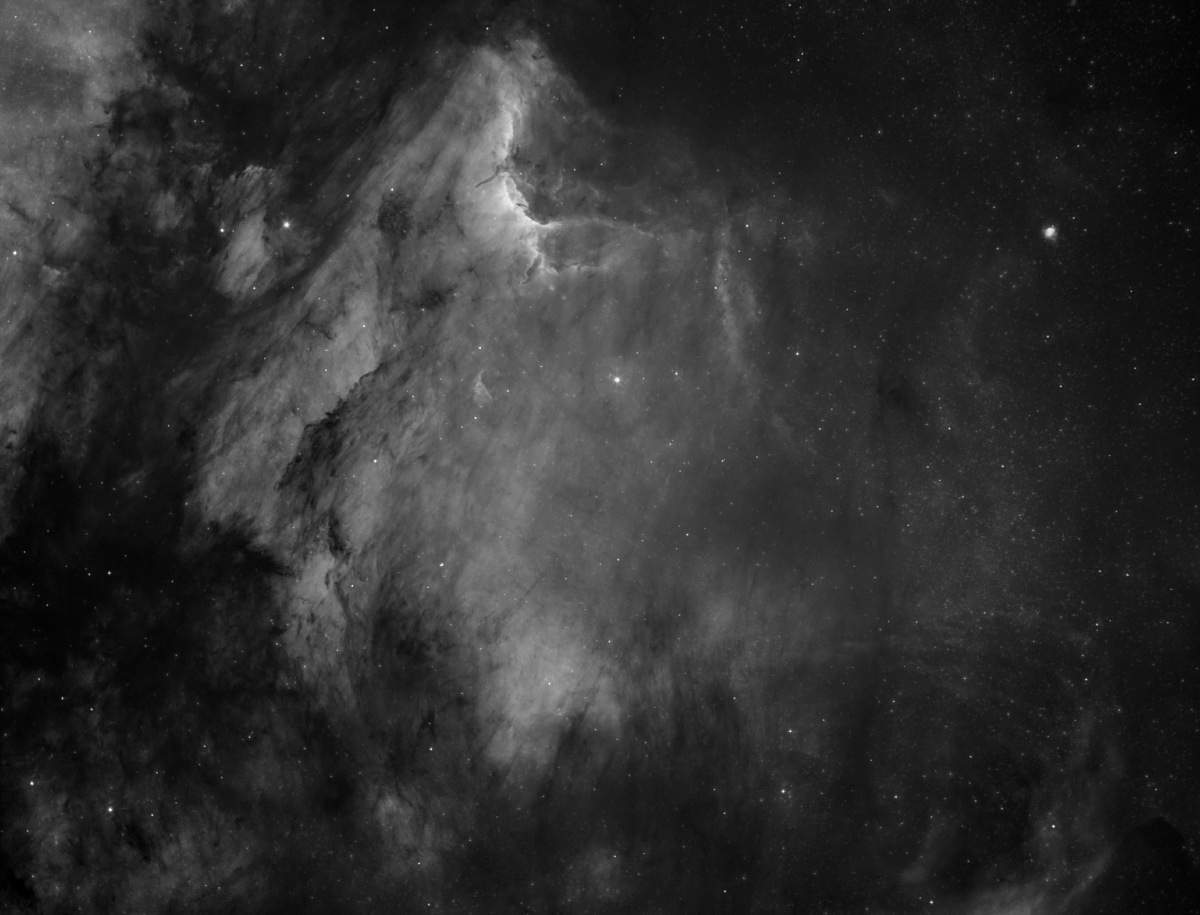
Move your mouse over the image above to get a version with labels on LBN (Lyndsí Catalogue of Bright Nebulae) and LDN (Lynds' Catalogue of Dark Nebulae) and other objects.
IC 5067-70, the Pelican Nebula, is a large but low-surface-brightness emission nebula in Cygnus. It is part of a nebula complex which also includes the famous North American Nebula, which is situated just a small move east of IC 5067-70, as well as other smaller patches of nebulosity to the south. The Pelican nebula was named for its resemblance to that animal, the body being the brightest part and the beak stretching away towards the lower left. The true distance of the whole nebula complex is not well known, but it is thought to be within our Galaxy's next spiral arm, called the Cygnus arm, at a distance of about 1.500 light years.
The nebulosity emits all of its light in isolated emission lines. The most prominent of those is the Hα line, which was exclusively recorded to obtain the image shown above, displayed here in gray tones. At a wavelength of 656 nm, it is located at the red edge of the visual spectral range, and cannot be not very well perceived by the human eye during nighttime.
 IC 5067, IC 5070 - Pelican Nebula, in narrow-band
filters, natural colors, which this image is part of.
IC 5067, IC 5070 - Pelican Nebula, in narrow-band
filters, natural colors, which this image is part of.
Exposure Data